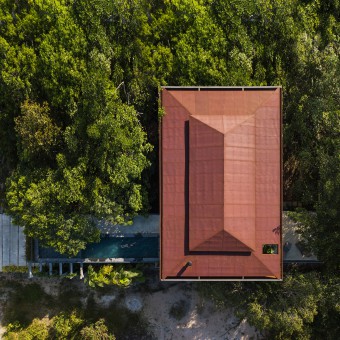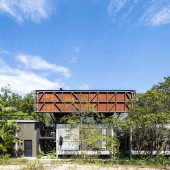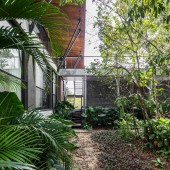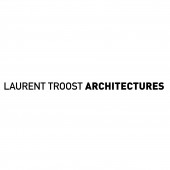Campinarana House by Laurent Troost |
Home > Winners > #74559 |
 |
|
||||
| DESIGN DETAILS | |||||
| DESIGN NAME: Campinarana PRIMARY FUNCTION: House INSPIRATION: To preserve the pre-existing Campinarana, a type of Amazon forest, the main architectural strategy was to minimize footprint by reversing the classic housing typology: sleeping rooms are located on the ground floor and living spaces on the upper floor. UNIQUE PROPERTIES / PROJECT DESCRIPTION: In the Amazon, natural conditions are extreme and the proximity of the equatorial zone requires an architecture oriented towards thermal comfort and passive sustainability: adequate footprint, protective eaves, dimensioning and orientation of cross ventilation openings, as well as preservation of local ecological systems. OPERATION / FLOW / INTERACTION: To optimize exposure to climatic factors, the house was divided into 2 large volumes. The longilineal one houses functions that do not need to be protected from the sun (access, garage, storage, pool, laundry, quarry, TV) and the transversal one houses functions that need to be protected from the sun/rains (living, dining, kitchen and bedrooms). In addition to the guaranteed cross ventilation with its sliding windows on both sides and the glass fins on the third side, the fully glazed living room allows complete integration with the covered terrace, solarium, pool and nature. PROJECT DURATION AND LOCATION: Project: 2012-2017 Completion: 2018 Location: Manaus, Amazon, Brazil FITS BEST INTO CATEGORY: Architecture, Building and Structure Design |
PRODUCTION / REALIZATION TECHNOLOGY: The choice of Corten as roof material was due to its low maintenance and evolutionary character in harmony with the Campinarana reddish clay soil. SPECIFICATIONS / TECHNICAL PROPERTIES: Internal area: 232 sqm Built area: 366 sqm TAGS: Architecture, House, Tropical, Sustainable, Radical RESEARCH ABSTRACT: The transversal volume received a contemporary reinterpretation of the Brazilian colonial roofs, with 8 pitches in 2 levels, allowing the fruition of the winds and the creation of an air mattress. On the East and West side, the roof consists of vertical planes protecting the spaces from the first and last rays of equatorial sun. To allow the roof to dilate independently from the house structure, it is only supported by eight supports in V. The choice of Corten as roof material was due to its low maintenance and evolutionary character in harmony with the Campinarana reddish clay soil. CHALLENGE: Low cost sustainable design ADDED DATE: 2019-01-22 19:02:18 TEAM MEMBERS (9) : Architecture: Laurent Troost , Architecture Team: Laurent Troost, Raquel Brasil dos Reis, Structure: Eng. Flávio Carvalho, Technical Engineer: Eng. Raimundo Onety, Landscape Design: Laurent Troost, Hana Eto Gall, Edith Eto Gall, Furniture: MMCité, Dellanno, Construction: Helena Rabello, Daniel Herzson , Pictures: Leonardo Finotti, Maíra Acayaba and IMAGE CREDITS: Leonardo Finotti, Maíra Acayaba |
||||
| Visit the following page to learn more: http://bit.ly/2FVQxGx | |||||
| AWARD DETAILS | |
 |
Campinarana House by Laurent Troost is Winner in Architecture, Building and Structure Design Category, 2018 - 2019.· Read the interview with designer Laurent Troost for design Campinarana here.· Press Members: Login or Register to request an exclusive interview with Laurent Troost. · Click here to register inorder to view the profile and other works by Laurent Troost. |
| SOCIAL |
| + Add to Likes / Favorites | Send to My Email | Comment | Testimonials | View Press-Release | Press Kit |
Did you like Laurent Troost's Architecture Design?
You will most likely enjoy other award winning architecture design as well.
Click here to view more Award Winning Architecture Design.








